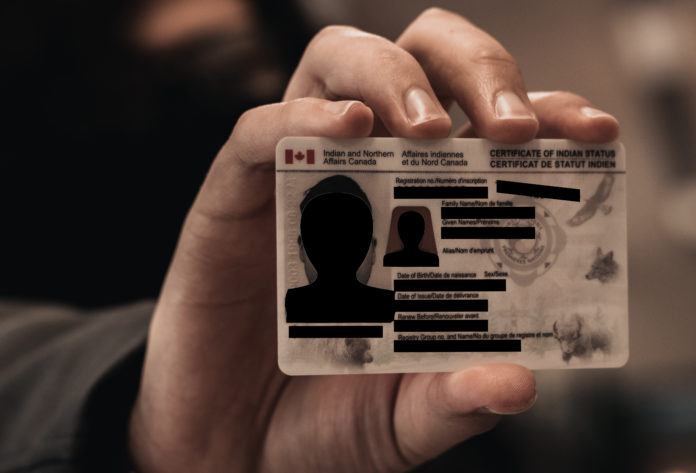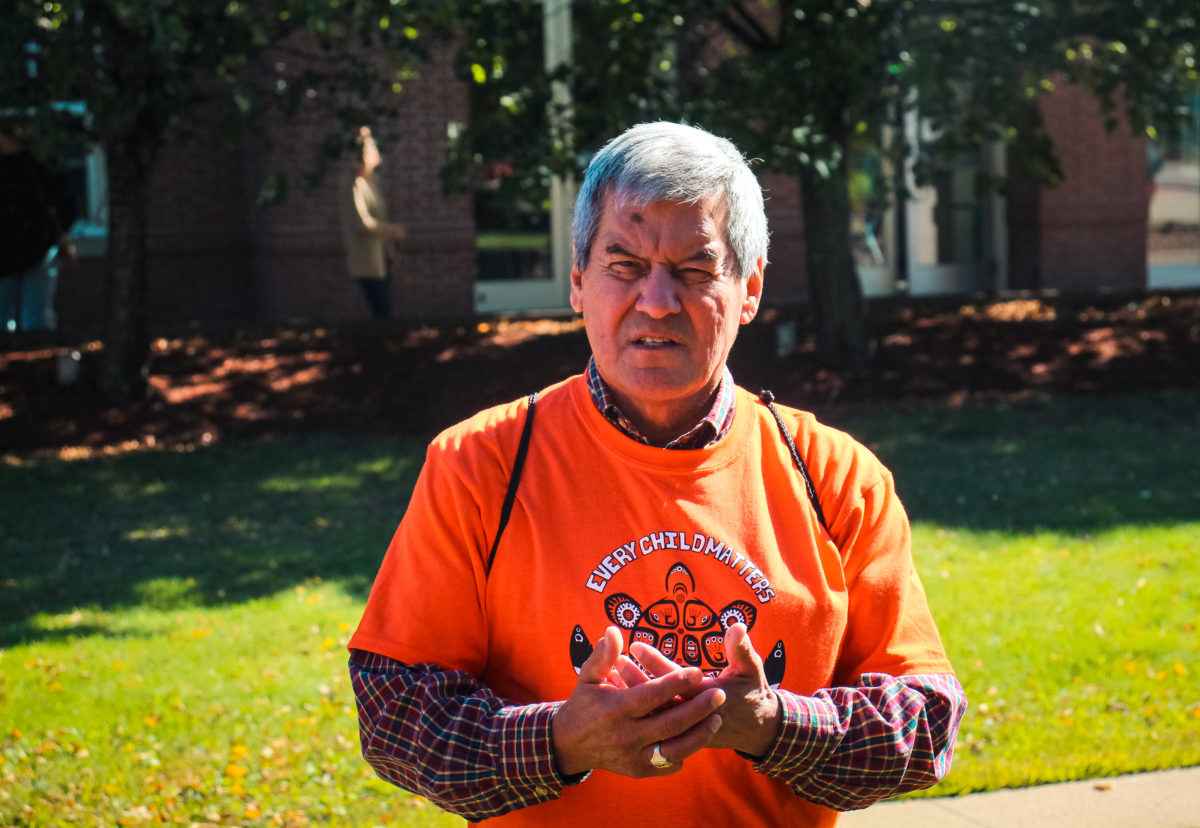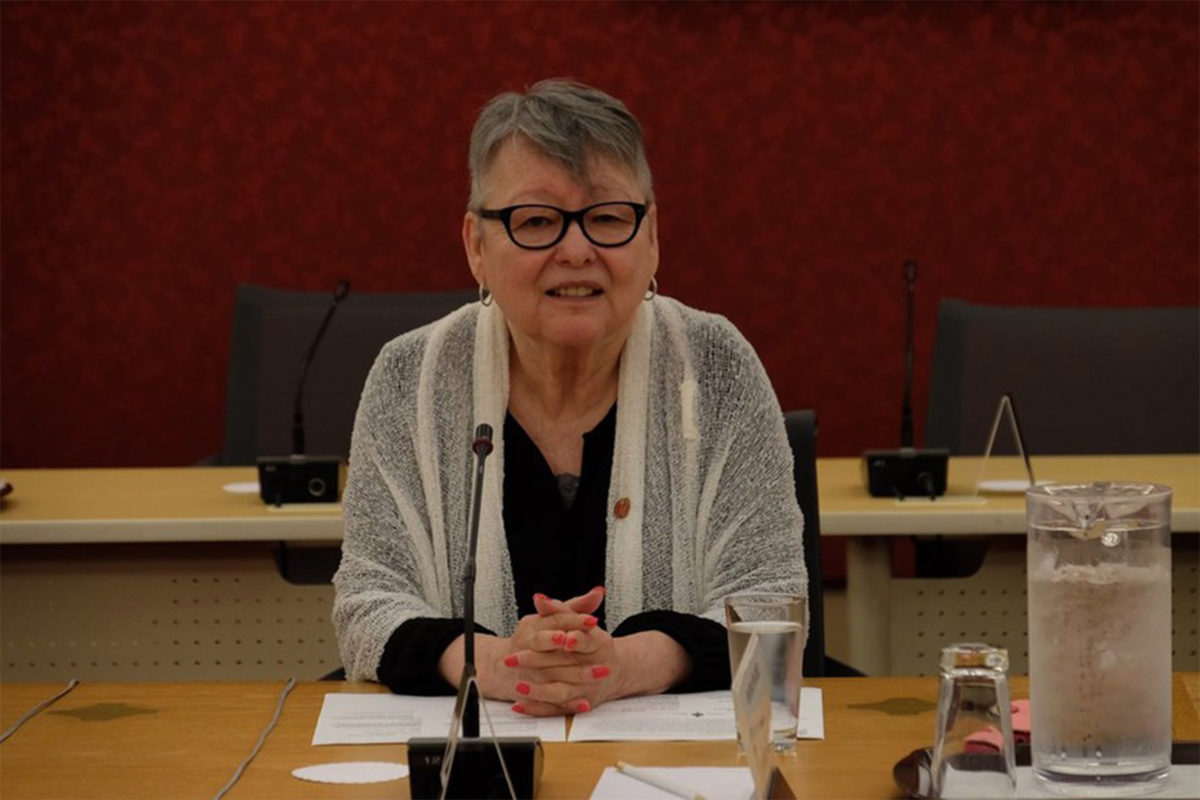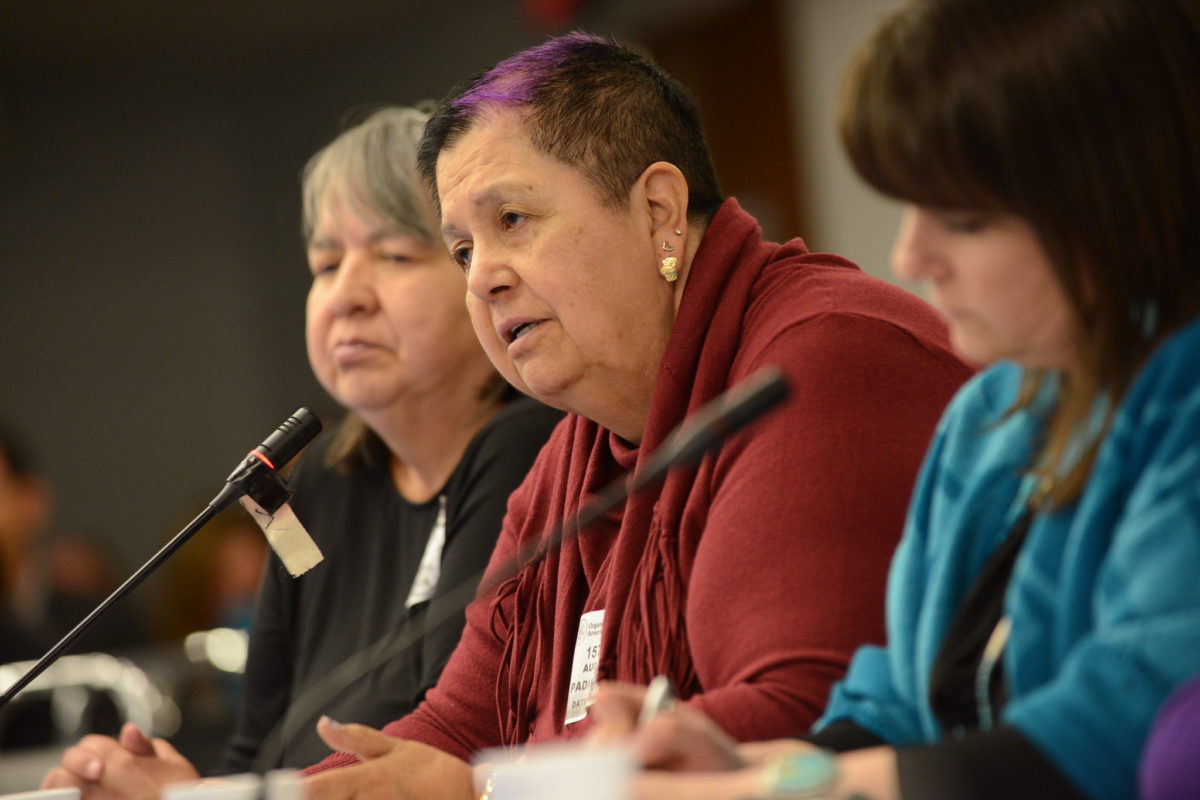

Tanner Augustine, a second-year St. Thomas University Mi’kmaq student from Elsipogtog First Nation, said if it wasn’t for a non-Indigenous woman to be able to marry an Indigenous man and be granted status, his bloodline would’ve been cut off generations ago.
He said blood quantum is a way to divide people and it’s been working.
Blood quantum tries to define how much Indigenous blood someone has.
“I don’t really care how much blood you have. It’s if you participate in the culture and you continue it, you pass it down and you’re Native,” he said.
Augustine said blood quantum is the government’s way to divide and conquer.
When Confederation took place in 1867, new legislation was put in place under the British North America Act. The federal government had full control over the new legislation and reserves for Indigenous Peoples. The provinces were also responsible for civil and land rights, said Graydon Nicholas, STU’s Native Studies chair.
Indian Act
The Indian Act consists of policies that try to assimilate Indigenous Peoples. The first Indian Act was passed in 1868.
In an email, Native Studies professor Roland Chrisjohn said the Indian Act caused different constructions to be created such as Indigenous women’s loss of status if they married non-Indigenous men. This was to reduce enrollment in First Nation bands.
This was legal until Bill C-31 was enacted in 1985. The bill was put in place to bring gender equality to the Indian Act by addressing gender discrimination, giving status back to those who lost it because of discrimination and letting bands control their own membership.
Chrisjohn said blood quantum systems were also incorporated in other parts of the world. He mentioned the Balck War, where the British attempted physical genocide in the mid-1820s against Indigenous Peoples in Tasmania.
The physical genocide wasn’t working so they switched to bureaucratic. The British made going to church or owning property illegal for Indigenous Tasmanians. If the Tasmanians wanted to do any of these things, they had to sign a paper that said they no longer see themselves as Indigenous.
“‘Blood quantum’ is just another one of those constructions,” he wrote.“By pretending that one ceases to become a member of her [or] his Indigenous nation once her [or] his ‘blood quantum’ falls below some arbitrary value, Canada recreates the bureaucratic genocide carried out by Tasmania.”

He wrote Canada was unable to completely carry out its plan because of the movements during the civil rights era.
“But it’s still there in the insinuation into most Indigenous Peoples’ thinking that, somehow, blood quantum makes someone an Indian. It’s racism … which our ancestors didn’t practice,” Chrisjohn wrote.
Nicholas said this is where the idea of blood quantum comes from.
“If your mom and grandmother were non-Native, that made you one quarter,” Nicholas said. “If your mother and your grandmother were non-Native, then you only have a certain amount of Indian blood. That’s when discrimination would have begun and then they called it enfranchisement.”
Augustine said the Indian Act made the Grand Council of Mi’kma’ki, the highest level of government for Mi’kmaq Peoples, disband in 1867. It caused the Mi’kmaq government to be separated into reserves across the provinces.
“The Indian Act was in many ways dividing and civilizing us. Blood quantum was a huge part of that too and also getting rid of all the heritage,” he said.
Blood quantum is a way of control to keep lowering the number of Indigenous Peoples, said Augustine.
The United Nations


Sandra Lovelace Nicholas is an example of an Indigenous woman who lost her status because she married a non-Indigenous man. They moved to the United States and had children. When the couple split up, Lovelace returned home to Tobique First Nation. When she arrived she learned she lost status after she married a non-Indigenous man.
When Canada wouldn’t grant Lovelace back her status, she decided to take her case to the United Nations in 1979. The UN found Canada guilty in 1981 but it wasn’t until 1985 that Canada repealed this law under the Indian Act, reinstating status to Indigenous women and others who may have lost it.
“A committee of the United Nations said Canada is in violation of international law because it’s dealing with racism. It’s also dealing with not allowing her to be able to go and be with her cultural group,” said Nicholas.
The United Nations Declaration on the Rights of Indigenous Peoples recognizes that Indigenous Peoples have their right to self-determination, said Nicholas.
“By exercising their right to self-determination, they can actually determine their own members of a nation. That to me is more exciting than trying to deal with the crazy Indian Act,” he said.
Nicholas said Canadian citizenship isn’t determined by whether or not someone was born in Canada. Immigrants can also apply to become citizens. Every other country abides the same way.
“[The Mi’kmaq nation or the Wolastoqiyik nation] should determine who their citizens are. And it’s not necessarily based on blood quantum,” he said.
He said another example of a case in Canada is Sharon McIvor. She is an Indigenous woman who decided to take a case to the UN when she asked herself why her grandchildren don’t have any Indigenous rights. The UN looked at her case and ruled her grandchildren are entitled to rights and status that Canada must grant.


Blood quantum is active in the United States in tribal membership. There are tribal governments that determine their members. But in Canada, where the Indian Act exists, people will still challenge certain sections. Another example of this is the Daniels case from 2016 which ruled that Métis and non-status Indigenous Peoples are Indigenous, said Nicholas.
In 2017, The United Nations Human Rights Committee said Canada still discriminates against Indigenous women and their descendants through the Indian Act regardless of the amendments put in place in 1985.
Reconciliation?
Nicholas said there should be reconciliation but the government doesn’t want to be told what they should do.
“It doesn’t matter if it’s federal, provincial or any government, they don’t like to lose cases in court,” he said. “Any cases that Indigenous People win in the courts are hard-fought.”
Augustine said reconciliation is something that is talked about but never actually happens.
“Reconciliation is easy for people to say, but hard for people to do,” he said.
He said if he could change the law he would get rid of the blood quantum section of the Indian Act entirely.
“It’s a weird thing with the Indian Act. We hate it. But we fear if it ever gets removed,” he said. “The Indian Act is the only thing that basically keeps the government from fully assimilating us legally. It’s very racist but it’s the only thing that stops [assimilation].”
Augustine said he doesn’t see blood quantum going away as long as the Indian Act exists. He also doesn’t see the Indian Act ever going away.
“It’s easier now to reclaim status than it was back then, I’ll give the government that. They’re slow to change and they drag their heels along the way but we’re forcing them.”
